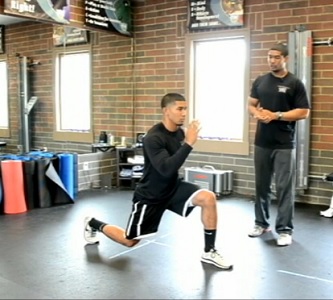By Brad Leshinske, CSCS
Athletic assessment is nothing new in the world of sports performance, but the quality of testing and the ability to use the results has changed dramatically in recent years. When the assessment of an athlete is complete, the use of that information is what should be used in the role of programming for that athlete. Depending on the athletes with whom you work, having a system in place for assessment is the first step. In athletic assessment, having a reliable, in-depth protocol that helps identify strengths and areas in need of improvement is most critical.
Within the IYCA, there is a great protocol that can assure the strength and conditioning coach a reliable test and the ability to use the data into the programming system that you use. The use of the assessment results will influence the athlete in a more positive way because the program is individualized. With more athletes becoming single sport dominant, having testing that is specific to what that sports demands is essential for the programming to be individualized as well.
The IYCA has three variants of overall assessment based on age, using the same or similar movement patterns with variance in reps and intensity. Having tests predicated upon age is a great resource, but it does not stop there. The IYCA has also come up with testing protocols based on sport. As the athlete gets older and more focused on one sport, it is vital to assess movement that is used in that sport. Gaining knowledge from both tests will enable a strength coach with the ability to individualize the program.

Athletic Assessment and Your Programs
So how does should such assessment influence programming for the athlete? Besides looking at chronological age (actual birth age) and also taking into consideration training age (years the athlete has been participating in formal conditioning or training), the assessments will show the areas in need of improvement. Take for example, the lunge, which is part of the testing protocol. The lunge is examined in the test with respect to four variables:
- Stride leg knee alignment – looking for alignment in the ankle, knee and hip and making sure there is no lateral or medial knee migration
- Depth of the lunge – making sure that the body is able to go in full range of motion and that the mobility and flexibility is there for the movement
- Vertical pillar of the knee, hip and shoulder – looking for body structure, the ability of the body to be totally vertical from the knee to the shoulder
- Balance and control – making sure the athlete is stable enough for the movement
With those four components of the movement examined within a gross movement pattern like the lunge, we can then find flaws and specifically address them during the mobility portion of a session prior to the warm up or following activity and within the core and lifting protocols. For example, if an athlete has a hard time getting depth for the lunge, the strength coach can prescribe movements to mimic the lunge to improve the range of motion in the specific area that needs it.
This ability to shape your program for each athlete rather than the athlete to the program is a game changer for not only the athlete, but also the strength and conditioning coach. Allowing the assessment to aid in the program process with a reliable test that can be done hundreds of times is important in the development of any athlete, in any age range and with any skill level.


Having purchased this excellent product, I would suggest a follow up resource on how to correct areas of weakness found would be good.
Thanks for all your great work.
Dan.